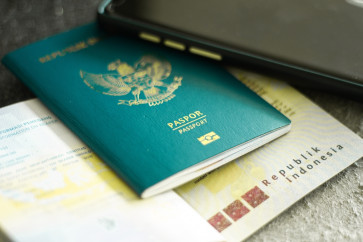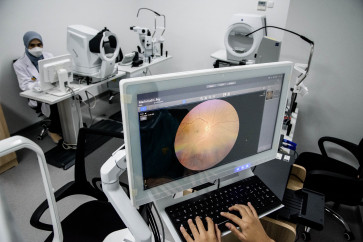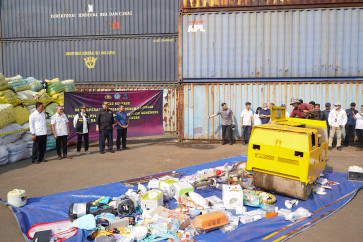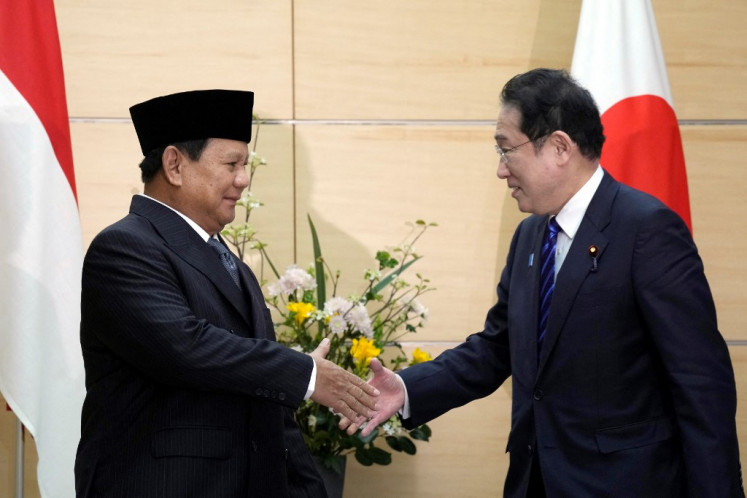Local telecom operators prepare for 5G networks
Playing rock, paper, scissors versus a robotic arm
Change Size

P
laying rock, paper, scissors versus a robotic arm. High-speed internet browsing. Self-driving buses. These were some of the “use cases” of high-speed, low-lag, wireless 5G technology presented at an experience center in Jakarta during last year’s Asian Games.
The center was funded by Telkomsel, the country’s leading telecommunications provider, which was quickly followed by rivals XL and Indosat with 5G experience centers of their own. Aside from being a publicity stunt, the centers signaled that Indonesia’s three largest providers were arming up to deploy 5G technology.
“Indonesia will use 5G. Definitely. I have no doubt about it,” said Sharif Lukman Mahfoedz, head of enterprise product and marketing at XL. “But deploying 5G is not just about providers’ readiness, it is also about the use cases. We need to be confident there are use cases.”
“Use cases” is the key term. Even though providers are generally confident Indonesia will adopt 5G, they are uncertain over when the adoption will begin because consumer use cases remain limited.
“The problem with 5G is that, globally, providers don’t know how to monetize it. There are several known use cases — like self-driving cars — but, realistically, they are not yet a major need,” said Ririek Adriansyah, president director of Telkomsel.
He added 4G technology, which is one rung below 5G, still sufficed in providing the internet capacity to seamlessly stream videos, use messengers and play mobile games, the three most data-demanding activities of the average user.
But for Telkomsel, maintaining 4G is also about maximizing investments. The company spent millions of dollars over the past three years to increase over tenfold its 4G base transceiver station (BTS) arsenal to 65,000 as of the first quarter.
The provider spent nearly US$2.15 billion, excluding $150 million for a satellite, building 4G capabilities last year alone. This included installing new BTSs and laying down fiber optic cables. Telkomsel’s 4G network reaches 93 percent of the population but the company aims to reach 95 percent by year-end.
While the providers mulled over 5G’s moment, two executives from separate electronics manufacturers recently said they were confident 5G would start being deployed in Indonesia between 2020 and 2021.
Jerry Soper, head of manufacturer Ericsson Indonesia, said the tipping point would be when the government allocated a spectrum slot for 5G. Any mid-band of between 2.6 and 3.5 Gigahertz was technologically doable but the latter band, which is used by satellites, was the most popular choice.
“While waiting for the spectrum to become available for 5G, we encourage operators to continue investing in 4G technology,” he told reporters earlier this month. “That 4G technology — like fiber [optic cable] networks — will be foundational for 5G in the future.”
He outlined several industrial use cases of 5G such as remotely operating heavy mining equipment and monitoring expansive palm oil plantations, “but we still think enhanced mobile broadband will be the biggest use case”.
Under unlikely optimal conditions, Telkomsel’s center found that 5G internet speeds maxed at 16 Gbps whereas 4G maxed at 300 Mbps (real-life conditions average 14.7 Mbps). The theoretical difference in speed could mean downloading “Games of Thrones” seasons 1 to 7 in high quality in two minutes (4G) versus two seconds (5G).
But for Ericsson, deploying 5G in Indonesia is also about recovering sales in Southeast Asia, Oceania and India. These are where revenues have declined over the past three years from SEK32 billion (US$3.35 billion) in 2015 to SEK29.6 billion last year.
The three-year decline, which also led to Ericsson laying off 1,900 employees, occurred mainly due to stiffening competition from rivals such as Nokia, ZTE and, most aggressively, Huawei.
Thus, believing 5G was around the corner, Ericsson has invested billions of dollars since 2016 in becoming a technology leader to capture the largest slice of the 5G market, even as its rivals build their own 5G capabilities. The company also actively pushes for the technology in Indonesia. It conducted the first ever 5G demonstration in April 2017 and supported XL and Indosat with their centers.
Shannedy Ong, country managing director for microchip maker Qualcomm Indonesia, concurred with Soper, saying “for 5G deployment and commercialization the first thing to be done is defining which spectrum will be taken [for 5G deployment], which is a mandatory requirement”.
Qualcomm released in February its latest 5G-capable microchip for mobile devices. The company, which also promotes 5G in Indonesia, expects the chip to be the main component in devices when the new wireless technology is deployed.
Meanwhile, the Communications and Information Ministry, which regulates spectrum band allocation, is working on the issue but does not seem to prioritize it at the moment.
Ismail, the ministry’s resources, information and equipment director general, said the government body would wait for the World Radio Conference (WRC) in October before it made any regulation on the technology.
“The adoption of 5G technology is based on the existing ecosystem. As of today, we see the need for 5G is still at an early stage and not needed by consumers but by industry,” he said.
The ministry is prioritizing taking 4G internet connectivity to unconnected regions. Communications and Information Minister Rudiantara signed earlier this month a 15-year contract worth Rp 20.4 trillion ($1.4 billion) with private companies to construct and operate a satellite, which will take internet to 149,000 public schools, clinics and offices.









